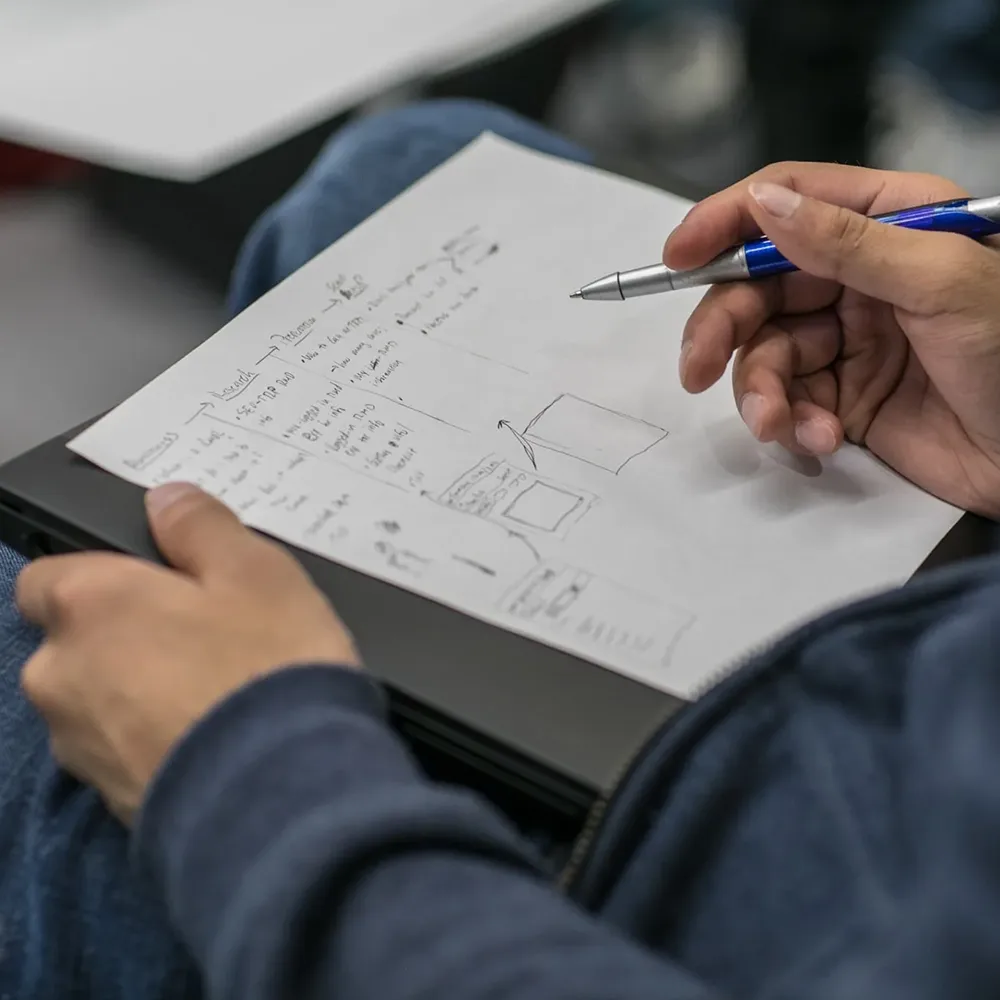Design Thinking is a user-centered, problem-solving methodology that emphasizes empathy, creativity, and experimentation. Rooted in innovation and collaboration, Design Thinking helps designers and businesses address complex challenges by focusing on the needs and perspectives of their users. This approach encourages teams to think outside the box, challenge assumptions, and explore new possibilities to create innovative, effective, and user-friendly solutions.
The Design Thinking process is typically divided into five stages: Empathize, Define, Ideate, Prototype, and Test. These stages are not necessarily linear but rather form an iterative cycle that allows for continuous refinement and improvement.
Empathize:
The first stage of Design Thinking involves immersing oneself in the user’s world to gain a deep understanding of their needs, motivations, and pain points. This is achieved through methods such as interviews, observations, and user research, which help designers develop empathy and build a foundation for informed decision-making throughout the design process.
Define:
In this stage, the insights gathered during the empathize phase are synthesized to identify the core problem or opportunity that the design team will address. The goal is to craft a clear and actionable problem statement that focuses on the user’s perspective and establishes a shared understanding among team members.
Ideate:
The ideation phase is all about generating a wide range of creative ideas and potential solutions to the defined problem. Brainstorming, mind mapping, and other collaborative techniques are used to encourage free-flowing, divergent thinking and foster innovative approaches. The aim is to explore multiple perspectives and push beyond obvious solutions to uncover novel ideas.
Prototype:
During the prototyping phase, designers create low-fidelity representations of their ideas to bring concepts to life and test their feasibility. Prototypes can take various forms, such as sketches, wireframes, or mock-ups, and serve as a tangible means to communicate, evaluate, and iterate on design solutions.
Test:
The final stage of Design Thinking involves testing the prototypes with real users to gather feedback, validate assumptions, and identify areas for improvement. Usability testing, interviews, and other evaluation methods are used to assess the prototype’s effectiveness in addressing the user’s needs and to refine the solution based on user feedback.
The Design Thinking method’s iterative nature allows for continuous learning and adaptation, ensuring that the final solution is not only innovative but also user-centered and responsive to the ever-evolving needs of the target audience. By embracing Design Thinking, designers, businesses, and organizations can foster a culture of empathy, collaboration, and innovation, ultimately driving better outcomes for both users and stakeholders.










